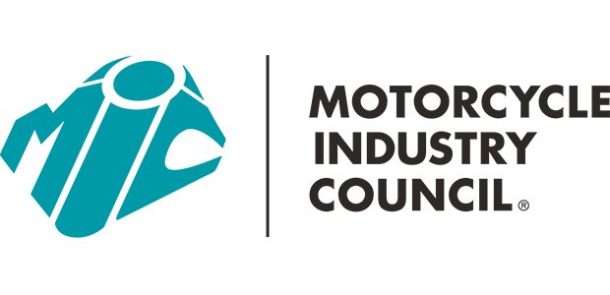A new theory of everything — Part three
 We need to engage new riders, and in new ways. The historical trend toward loss of rider opportunity in public forests and BLM-managed territories is troubling and it is no coincidence that participation in our sport has declined as well. With all the controversy and expense involved in accessing public land, why not take a closer look at the untapped freedom that is possible when riding on private lands? No more trail width restrictions or hyper-sensitivities toward low spots that hold water temporarily. A pivot toward riding on private property is already being driven by growth in the UTV market but today it only creates opportunities for the people that own these places. What if we could get landowners to profit from rider access so much that they might compete for publicly-accessible trails to be developed across their property and promote the growth of powersports? What if we could create Net Promoters of powersports at schools and municipalities? In this blog we will review a hypothetical concept called EZTrail that changes the land access conversation completely. Although this idea needs further refinement, it should spark plenty of discussion on how to leverage mobile tech to grow the off-road industry.
We need to engage new riders, and in new ways. The historical trend toward loss of rider opportunity in public forests and BLM-managed territories is troubling and it is no coincidence that participation in our sport has declined as well. With all the controversy and expense involved in accessing public land, why not take a closer look at the untapped freedom that is possible when riding on private lands? No more trail width restrictions or hyper-sensitivities toward low spots that hold water temporarily. A pivot toward riding on private property is already being driven by growth in the UTV market but today it only creates opportunities for the people that own these places. What if we could get landowners to profit from rider access so much that they might compete for publicly-accessible trails to be developed across their property and promote the growth of powersports? What if we could create Net Promoters of powersports at schools and municipalities? In this blog we will review a hypothetical concept called EZTrail that changes the land access conversation completely. Although this idea needs further refinement, it should spark plenty of discussion on how to leverage mobile tech to grow the off-road industry.
Overview
EZTrail is an app-based approach something like a cross between a toll road network and AirBnB. It pays landowners to create off-road access across their property. It would be the most professionally-managed and successful trail-building program in history by meeting the needs of stakeholders in ways never before possible. It can accommodate off-road vehicles of all types including snowmobiles 12 months a year. EZTrail helps to fund and grow trail riding clubs. It helps land owners pay their property taxes and more. It grows the next generation of riders. It can be adapted in real time to changing environmental conditions or business opportunities. It helps reach a broader market by meeting the security requirements of “soccer moms.” It turns public schools into Net Promoters of our sport. EZTrail creates real-time, tangible business opportunities for everyone from restaurants to repair shops. It gives people with UTVs wider than 50-inch a trail network to ride. It gives people a chance to depart for an all-day run right from their back yard who could have never dreamed of doing such a thing before. EZTrail distributes traffic as evenly as possible to minimize rutting in any particular location. Some areas of the country would require years of lobbying for EZTrail to become a reality, but in others EZTrail could scale in a matter of months. It’s a new theory of everything for trail systems, and could be expanded to include other applications such as hunter access or bicycling.
Creating routes
The EZTrail model recruits a critical mass of participating land owners who allow the renting of trails that cross their land. EZTrail software developers would use Google Maps and other tools to propose routes, then work with landowners to select entry points, etc. The entry and exit points would have to be in proximity to those on neighboring properties for routes to be contiguous. Trail riding club volunteers could help with this critical part of the process. As a side benefit farmers and ranchers who have a mud hole or gravel pit could direct riders to these gathering spots while knowing that there is a blanket insurance policy in place. As the GPS database is built out it permits various routes to be digitally constructed either by suggestion of the app or by the riders who use the app. The trails would have to be narrow enough to avoid “cartway” or other road-type designations that would take control of the route away from the land owner. The system requires land owners to permit a minimum number of days and weekends per year for riders to cross their property. At the same time, landowners could be allowed periods when they can prohibit traffic such as during harvest season, times of flash flooding, or other reasons. Once routes are created the area is opened up to riders. The use case could be as simple as creating a short lunch time route for someone who wants to de-stress, or something as complex as people looking to ride from their back door for 30 or 40 miles so they can connect to public land. As with AirBnB, local laws must be respected and are likely to be prohibitive in some areas. In the short term there are plenty of states and counties with rider-friendly regulations. EZTrail will leverage these regulations to benefit schools, landowners and businesses alike.
Passive income for land owners
According to sapling.com: “Local property taxes often make up the majority of a school’s funding, sometimes making up for over half of total funding. A study done by Bowling Green University showed half of all property taxes went to support elementary and secondary schools, and in Ohio the number was as high as 70 percent as of 2008. Schools tend to rely on property taxes more and more because of cuts in federal and state funding of education.” As much as they benefit schools, property taxes are a real sore spot with large land owners. I’ve listened to farmers call talk radio stations to ask why they are required to fund local school districts so disproportionately. The issue has been exacerbated by reductions in CRP and other government conservation programs that once helped landowners. In every problem there’s an opportunity. Being paid to open single-tracks through their property might be pretty appealing if it can help to negate most property taxes and this is one of the objectives of EZTrail.
Rutting and property damage is also a major concern for private land owners, yet the solution is often close at hand. Farmers have to deal with lots and lots of rocks, and they are the perfect ointment for stabilizing clay or sand. If EZTrail could be used to help trail clubs fund skid steers, laborers, and similar resources for rock relocation this could be one more benefit to private land owners that choose to open a trail across their property.
Other obstacles with landowners would include liability concerns, potential lost income from crop rows that are sacrificed for a trail, and interference during hunting season. The first would be covered by a blanket liability policy that would be a necessary part of the business model. This alone would help many landowners open their property to area dirtbike and ATV jockeys. The second concern would need to be covered by a mixture of resourcefulness in selecting trail crossings and having enough funds to compensate the land owner (which would require work to be sure). The third concern is already mitigated somewhat by limitations governing ATV use during hunting season as well as judicious selection of trails. There is no doubt that other landowner concerns would surface, but no one is saying this will be easy to implement.
A “Trails to Tablets” program to benefit schools
School districts are constantly requesting more funding to keep up with technology and personnel demands. As EZTrail grows it could be a dynamic tool for helping to augment this funding, and provide some great partnerships with school superintendents and local business leaders who are partnering via the app. First of all, the element of covering property taxes for landowners should be publicized and re-publicized. Second, EZTrail could donate a percentage of funds to the school district of the subscribers choice or a default district based upon zip code. Once or twice a year the president of the area trail club makes the rounds handing out oversized tagboard “Trails to Tablets” checks to the superintendent of each district to publicize how much money the riding community is providing them. Now we can say that more trail riding generates more tablets, basketballs and paraprofessional aides for school kids. We put UTV and Dirt Bike riders out front as partners with education and keep them there. With this approach we could begin to have our activities start being promoted in the schools. Archery and shot gun teams are some of the fastest-growing scholastic competitions in many states. It’s time for snowmobiling and ATV riding to become school-approved sports as well.
Editor’s note: Stay tuned for part four of Gustafson’s blog here.
Powersports Industry Consultant and 25-year industry vet Gary Gustafson was the first designer of what became the RiderX and Ride Command systems for Polaris, as well as contributing to Yamahas new TRX trip planner system. His company G-Force Consulting Inc. provides Brainstorming Session guidance, New Business Development, OEM Account Sales and Market Research services to suppliers and OEMs alike. Visit www.gforceconsulting.com or marketresearch.motorcycles to learn more.








